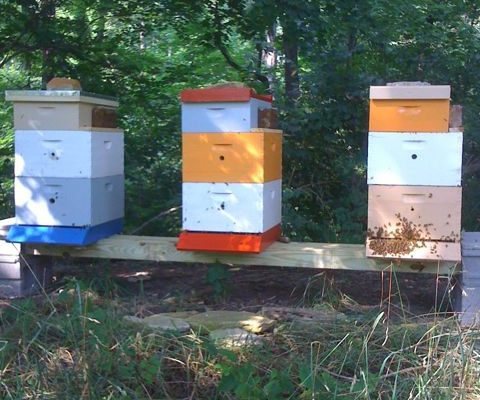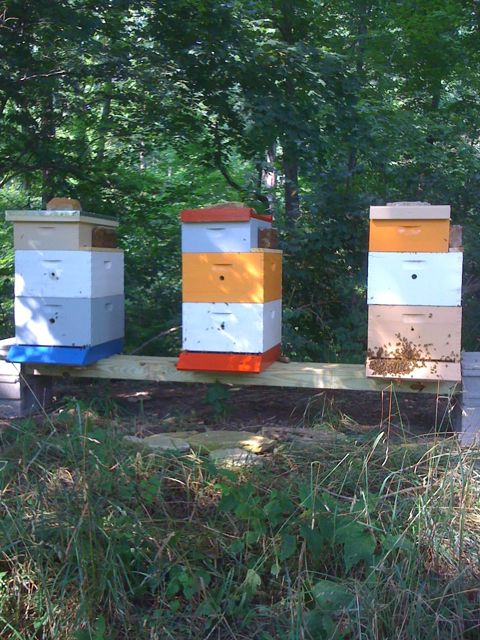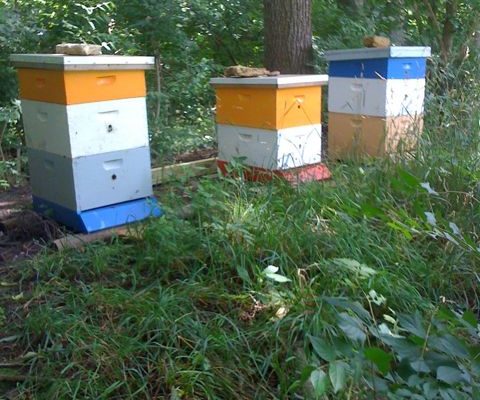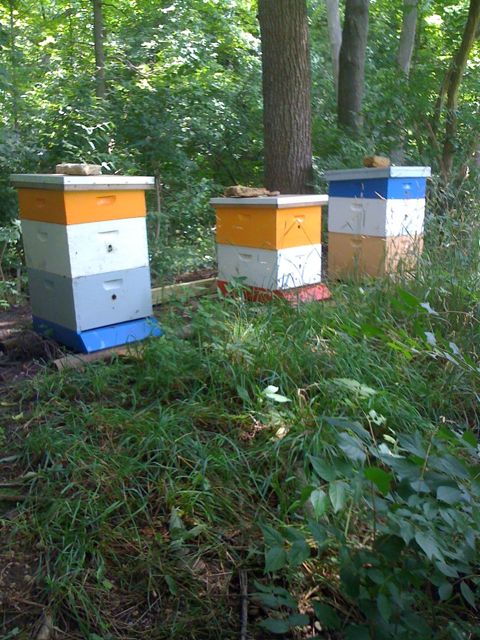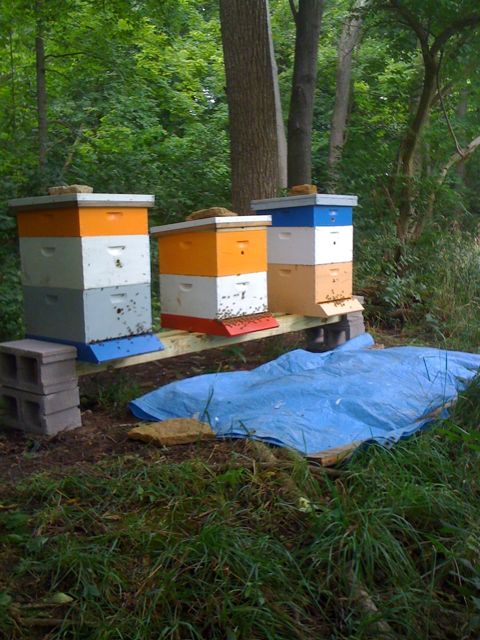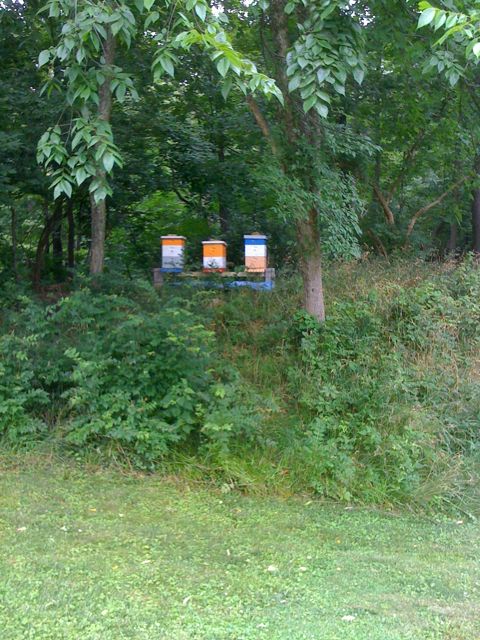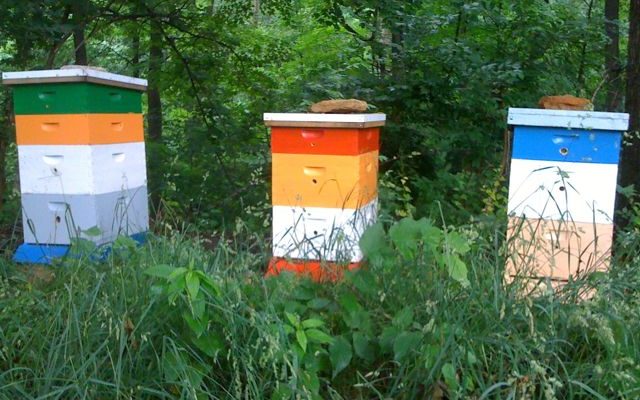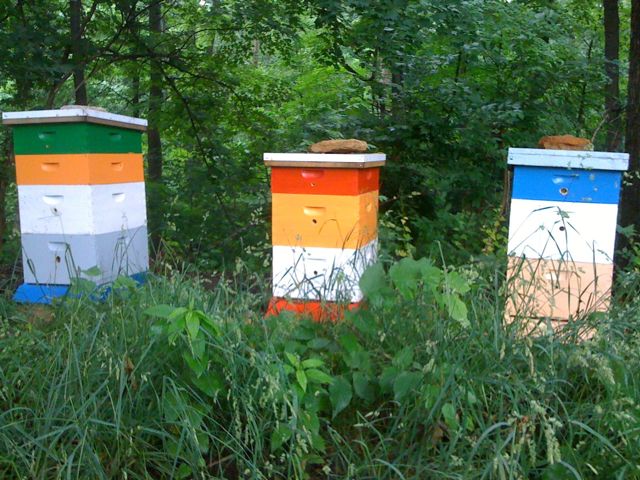I discovered a couple of swarm cells in Tomboys before I left for Florida last week. I thought for sure Tomboys would swarm before I returned, and they may have…hard to tell.
Today the swarm cells were still there, so in order to keep the bees from swarming and to take advantage of the new queen cells, I used the swarm cells from Tomboys to make a split and create a new hive.
(I KNOW…I should have taken more pictures, but here’s the problem: My iPhone operates by touch, and my gloves aren’t exactly like skin, so in order to use the iPhone for pictures, I have to take off my glove, take the picture, put the glove back on, etc. Time consuming and awkward.)
Anyway, I took Michael Bush’s advice from Beemaster.com: I stacked two medium boxes together; in the center of the top box, I put 4 deep frames (one containing the swarm cells [these will supply the queen], one containing honey [this will supply food until there are active foragers] two containing brood [these will build up the colony with workers]; I filled the remainder of the boxes with empty, medium-depth, foundationless frames. The bees will certainly build some funky comb beneath the deep frames because there’s so much empty space there, but I can clean that mess up later.
I scooted Tomboys over a little bit, and I placed the new, as-yet-unnamed hive facing the entrance of where Tomboys previously sat. The foragers who left Tomboys this morning (before the move) should be confused as to which hive they belong when they return—50% should enter the new hive and build up the population there; 50% of them should head back into their Tomboys home. I’ll to reverse the two hives in 7 days to balance it all out.
I don’t know if I should name the new hive yet or not. This thing feels quite experimental, so I don’t want to pin any hopes on its survival.
Here’s what the set up looks like now:
On another note: Girls of Summer are building great comb on their new foundationless frames. Neither Amazons nor Tomboys are doing a thing with theirs yet…but I think each of those hives is trying to build up post swarming, so they aren’t drawing any comb whatsoever.



